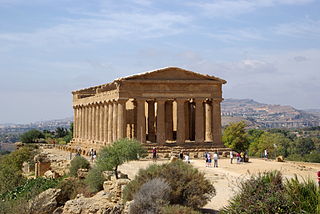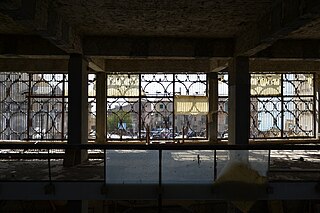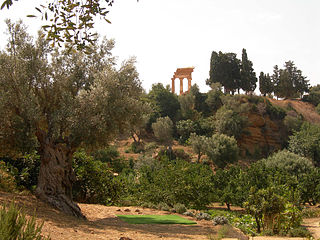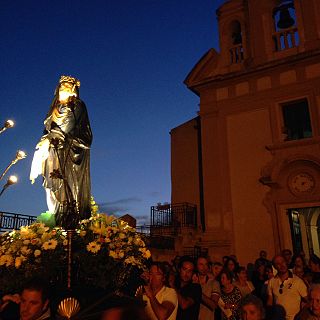7 Sights in Agrigento, Italy (with Map and Images)
Legend
Welcome to your journey through the most beautiful sights in Agrigento, Italy! Whether you want to discover the city's historical treasures or experience its modern highlights, you'll find everything your heart desires here. Be inspired by our selection and plan your unforgettable adventure in Agrigento. Dive into the diversity of this fascinating city and discover everything it has to offer.
Sightseeing Tours in AgrigentoActivities in Agrigento1. Temple of Concordia
The Temple of Concordia is an ancient Greek temple of Magna Graecia in the Valle dei Templi in Agrigento on the south coast of Sicily, Italy. It is the largest and best-preserved Doric temple in Sicily and one of the best-preserved Greek temples in general, especially of the Doric order. It is located a kilometer east to the Temple of Heracles.
2. Temple of Olimpic Jupiter
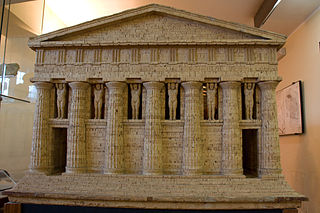
The Temple of Olympian Zeus in Agrigento, Sicily was the largest Doric temple ever constructed, although it was never completed and now lies in ruins. It stands in the Valle dei Templi with a number of other major Greek temples.
3. Museo Diocesano
The former Diocesan Museum was designed by the museographic architect Franco Minissi, commissioned by the then Bishop of Agrigento Mons. Giovanni Battista Peruzzo. Built between 1958 and 1963, demolishing the San Gerlando Catholic educational club, the museum was opened to the public in '64, but it carried out its function for a very short period, about two years, since in '66, due to the landslide that occurred along the south-west side of the historic center of the city, it was closed as a precaution and its collection placed in the Archaeological Museum of San Nicola and in the premises of the nearby Archbishop's Palace.
4. Giardino della Kolymbetra
The Kolymbethra garden is an archaeological site of great naturalistic and landscape importance, located in a small valley in the heart of the Valley of the Temples in Agrigento. In 1999 the Sicilian Region entrusted it in free concession to the Italian Environment Fund (FAI) for a period of 25 years, putting an end to the situation of abandonment in which it had fallen in the last decades of the twentieth century; following this it has become one of the places of archaeological/naturalistic interest of great importance at a territorial and national level. The vegetation and structural restoration organized by the FAI allows a visit to the Temple of Hephaestus, as well as the discovery of some hypogea.
5. Cattedrale di San Gerlando
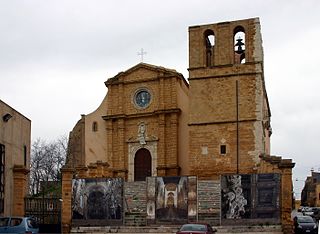
Agrigento Cathedral is a Roman Catholic cathedral in Agrigento, Sicily, dedicated to Saint Gerland. Founded in the 11th century, it was consecrated in 1099 as the seat of the restored bishop of Agrigento. The diocese was elevated to an archdiocese in 2000, and the cathedral is thus now the seat of the Archbishop of Agrigento.
6. Santuario della Beata Maria Vergine Addolorata
The sanctuary of Our Lady of Sorrows is one of the most important Marian Catholic places of worship in Agrigento and the seat of one of the oldest confraternities in the city, that of Maria SS. Dei Sette Dolori.
7. Museo Archeologico Regionale Pietro Griffo
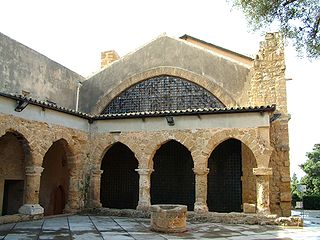
The "Pietro Griffo" Regional Archaeological Museum of Agrigento collects the collections of state, civic and diocesan archaeological materials, and constitutes an organic whole of particular importance for understanding the history of the city of Agrigento and its territory. The architecture and museographic layout are due to the architect Franco Minissi.
Share
How likely are you to recommend us?
Disclaimer Please be aware of your surroundings and do not enter private property. We are not liable for any damages that occur during the tours.
